Dermatology Question of the Week: Surgical Skills

Question:
An 80-year-old female with biopsy-proven basal cell carcinoma on the left upper cutaneous lip presents to the Mohs surgeon. After determining that the margins are clear, the defect is closed in the following fashion noted in the photograph below. What type of closure was performed?
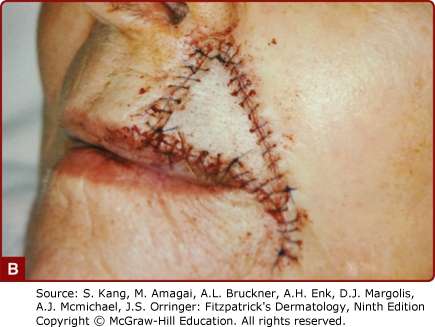
Answers:
A. Primary intention
B. Secondary intention
C. Advancement flap
D. Rotation flap
E. Transposition flap
F. Interpolation flap
G. Graft
Rationale:
A variety of closure options are available for surgical procedures. This is a commonly tested surgical topic among dermatology examinations given the ability to ask questions based on pre-operative or post-operative photographs of the wound. With regards to flaps, it can help to categorize them based on their movement to better understand which flap is being performed. A simple stratification is to determine if the flap is a “sliding” or a “lifting” flap based on its movement. Sliding flaps are where the donor tissue slides into place and does not require lifting the tissue over skin; this would include advancement flaps and rotation flaps. Lifting flaps involve lifting of the donor tissue and include transposition flaps and interpolation flaps.
Correct answer: C Advancement flap
The photographs above demonstrate a V-to-Y advancement flap also known as an island pedicle flap. The pedicle tissue “slides” into the defect forming the top part of the Y and the secondary defect is closed forming the bottom of the Y portion. No tissue is lifted in this process. An additional example is presented below.

Incorrect answers:
A. Primary intention involves direct closure of the wound edges as noted in the photograph below.
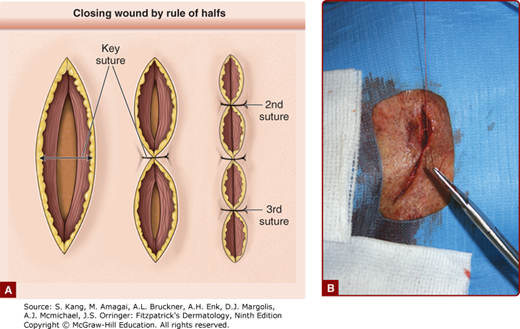
B. This is not an example of secondary intention. Secondary intention occurs when a lesion is not closed and instead allowed to granulate without suturing or closure of the wound edges. This can be an ideal option for small or thin defects, especially on concave surfaces.
D. A rotation flap, although also a “sliding" flap, involves the rotation of tissue around a pivot point. The Rieger flap is a frequently employed rotation flap used on the nasal dorsum. Rotation flaps are also frequently used on the scalp. An example is shown below.
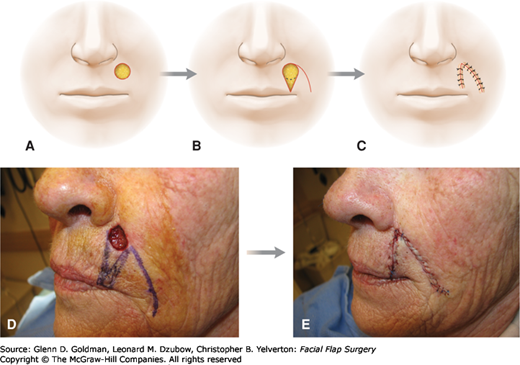
E. Transposition flaps involve lifting donor tissue with skin laxity over adjacent tissue to help fill a defect that has little laxity. The rhombic transposition flap is a commonly employed transposition flap pictured below.

F. Interpolation flap is a lifting flap that has two steps. The first step is lifting of the donor tissue over adjacent tissue. The second step involves removing the blood supply of the flap by cutting the pedicle of the flap which is typically done 2-3 weeks after the first step. These types of flaps typically involve the use of a larger arterial supply than transposition flaps. Below is an image of the paramedian forehead flap.
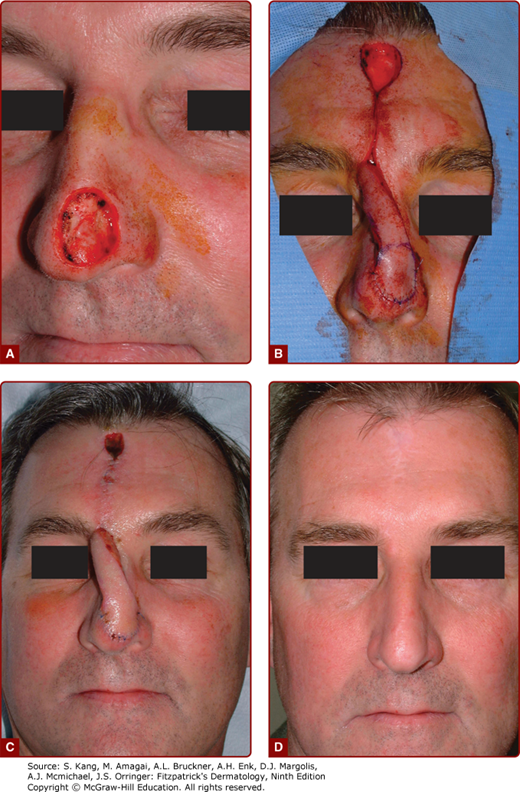
G. Grafts involve the transfer of donor tissue to a defect with complete detachment from its original blood supply and location. See an example in the photograph below.
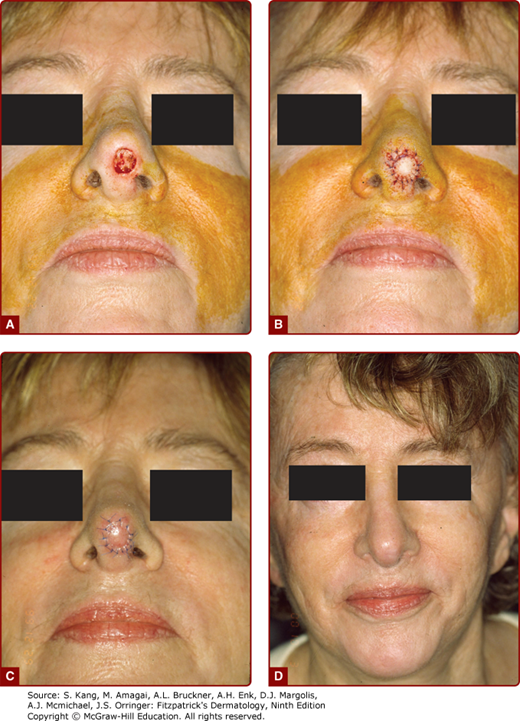
Additional reading at Chapter 203: Excisional Surgery and Repair, Flaps, and Grafts and Chapter 21: Advancement Flaps
Johnson TM, Swanson N, Baker SR. Concepts of sliding and lifting tissue movement in flap reconstruction. Dermatol Surg. 2000 Mar;26(3):274-8. doi: 10.1046/j.1524-4725.2000.09178.x. PMID: 10759809.

Create a Free MyAccess Profile
AccessMedicine Network is the place to keep up on new releases for the Access products, get short form didactic content, read up on practice impacting highlights, and watch video featuring authors of your favorite books in medicine. Create a MyAccess profile and follow our contributors to stay informed via email updates.